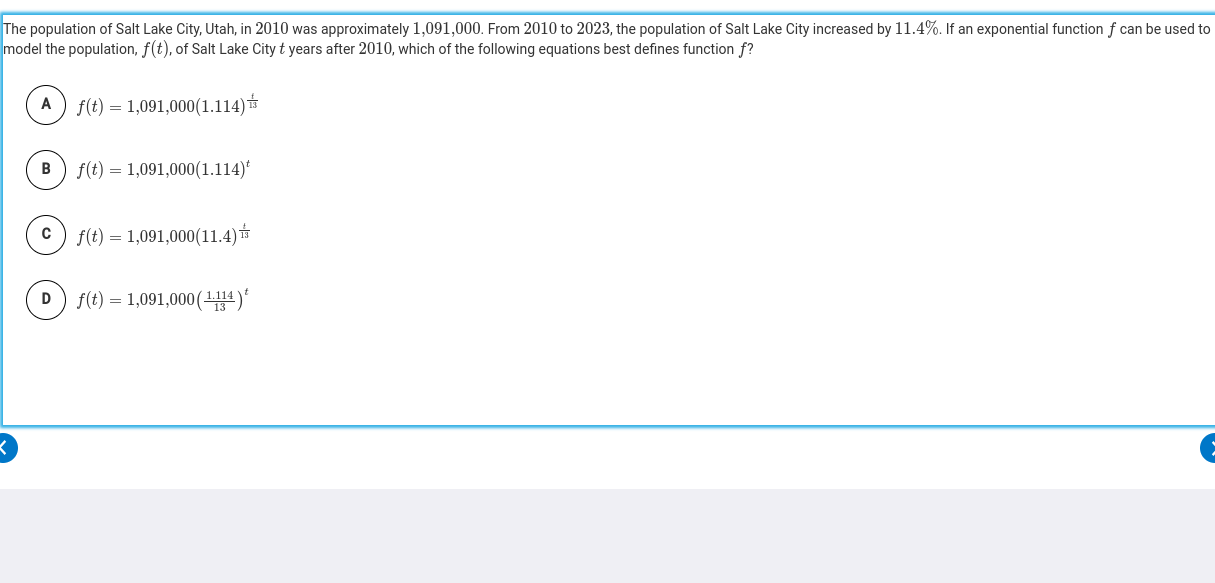The population of Salt Lake City, Utah, in 2010 was approximately 1,091,000. From 2010 to 2023, the population of Salt Lake City increased by 11.4%. If an exponential function f ca... The population of Salt Lake City, Utah, in 2010 was approximately 1,091,000. From 2010 to 2023, the population of Salt Lake City increased by 11.4%. If an exponential function f can be used to model the population, f(t), of Salt Lake City t years after 2010, which of the following equations best defines function f?

Understand the Problem
The question is asking to identify the correct exponential function that models the population growth of Salt Lake City, Utah from 2010 to 2023, based on a 11.4% increase in population. We need to analyze the provided function options to find the one that correctly represents this scenario.
Answer
$$ f(t) = 1,091,000(1.114)^t $$
Answer for screen readers
The correct function is: $$ f(t) = 1,091,000(1.114)^t $$
Steps to Solve
-
Understanding Population Growth Function
The general form of an exponential growth function is given by: $$ f(t) = P_0 \cdot (1 + r)^t $$ where ( P_0 ) is the initial population, ( r ) is the growth rate, and ( t ) is the time in years.
-
Setting Initial Population and Growth Rate
From the problem, we know:
- Initial population ( P_0 = 1,091,000 )
- Growth rate ( r = 0.114 ) (which corresponds to a 11.4% increase).
-
Formulating the Function
Based on the above, we can write the function for the population after ( t ) years: $$ f(t) = 1,091,000 \cdot (1 + 0.114)^t = 1,091,000 \cdot (1.114)^t $$
-
Analyzing the Options
Now we compare this equation to the options provided:
- Option A: ( f(t) = 1,091,000(1.114)^{t/13} ) → wrong, because of division by 13.
- Option B: ( f(t) = 1,091,000(1.114)^t ) → this matches our derived function.
- Option C: ( f(t) = 1,091,000(11.4)^{t/13} ) → wrong, bases must be ( 1.114 ).
- Option D: ( f(t) = 1,091,000(1.114/13)^t ) → wrong, incorrect base.
-
Choosing the Correct Answer
The correct answer is option B, which accurately models the population growth with a straight exponent.
The correct function is: $$ f(t) = 1,091,000(1.114)^t $$
More Information
This function effectively captures the 11.4% annual growth rate of the population of Salt Lake City, allowing for predictions of the population at any year from 2010 onward.
Tips
- Using incorrect base values: Confusing percentages and whole numbers.
- Misinterpreting time in years: Introducing unnecessary division which alters the growth rate.
AI-generated content may contain errors. Please verify critical information